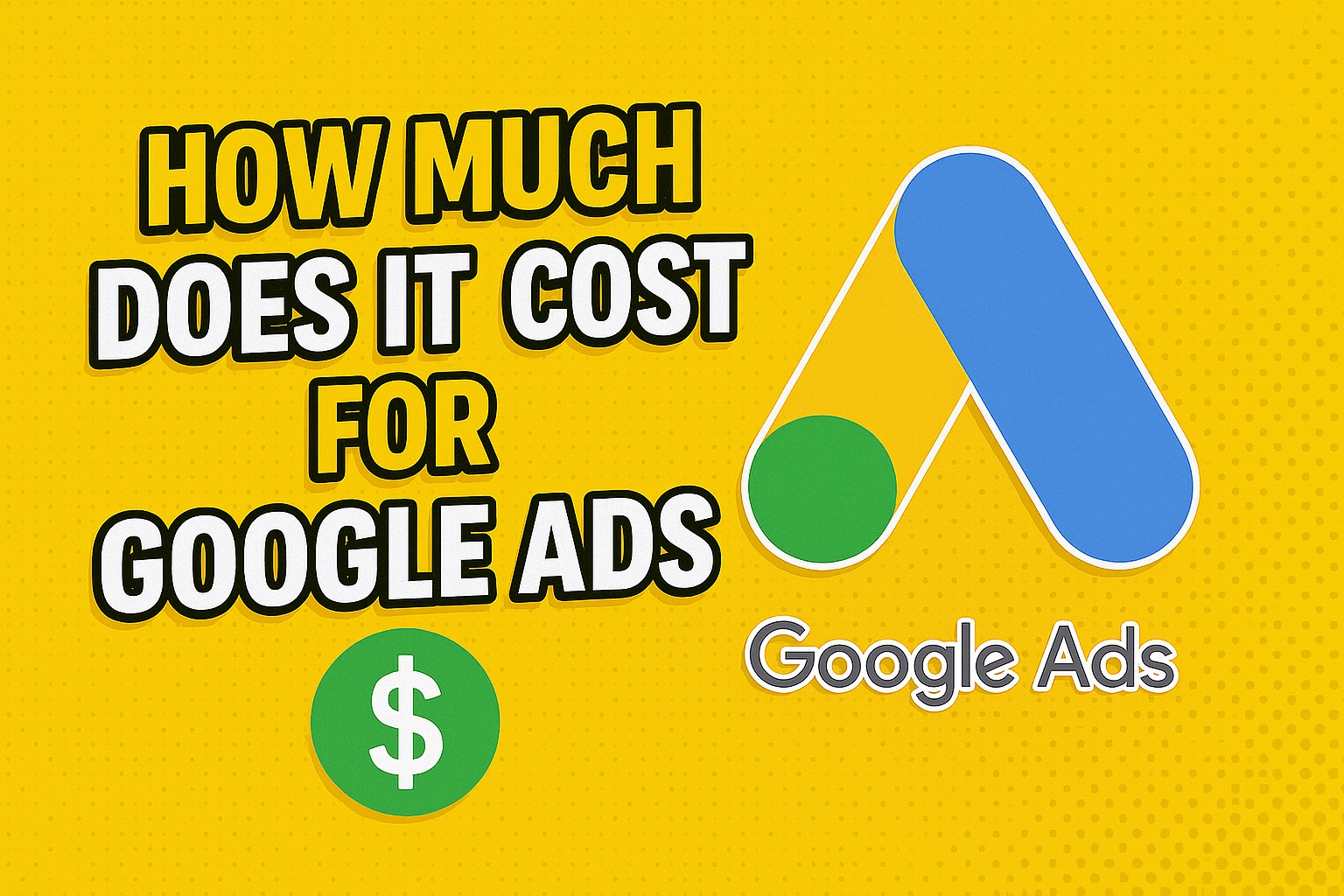Google Ads can be a powerful marketing tool for small businesses, offering the ability to reach customers precisely when they are searching for products or services. But one of the most common questions small business owners have before starting is: how much will it cost?
The answer depends on several factors, including your industry, location, competition, and advertising goals. Understanding how Google Ads pricing works helps small businesses budget appropriately and make informed decisions about where to invest their advertising dollars. In this post, we explain how Google Ads pricing works, provide typical cost ranges, and offer industry-specific examples to help small businesses set realistic expectations.
How Google Ads Pricing Works
Google Ads operates on a pay-per-click (PPC) model, meaning you only pay when someone clicks on your ad. When a user searches on Google, an auction determines which ads appear and in what order. Advertisers bid on keywords relevant to their business, but winning the auction isn’t just about bidding the most.
Google uses a metric called Ad Rank, which combines your bid with your ad’s Quality Score (a measure of the relevance and quality of your ads and landing page). This system ensures that even small businesses with smaller budgets can compete effectively if they have well-targeted, high-quality ads.
Several factors affect your actual costs:
- Competition: Popular keywords in competitive industries cost more per click.
- Keyword demand: High-volume keywords tend to have higher CPCs.
- Quality Score: Higher Quality Scores lower your actual cost-per-click and improve your ad position.
This pricing model gives small businesses flexibility — you control how much you’re willing to spend and can adjust your bids and budgets at any time.
Typical Google Ads Costs for Small Businesses
While actual costs vary, small businesses can expect some common cost patterns when using Google Ads:
- Average CPC ranges:
For most industries, the average cost-per-click ranges between $1 and $3 on the Google Search Network. However, in highly competitive sectors (like legal or insurance), CPCs can exceed $10–$30 per click. - Typical monthly budgets:
Many small businesses spend anywhere from $500 to $3,000 per month on Google Ads. Your budget should reflect your goals, industry, and how much competition you face in your market. - Geographic and industry influences:
Costs can vary based on location — targeting ads in large urban areas usually means higher CPCs than smaller towns. Similarly, industries like professional services (lawyers, financial advisors) often face much higher CPCs than local service providers (plumbers, landscapers) or retail businesses.
Understanding these averages gives small businesses a realistic starting point when planning their Google Ads campaigns.
Example Costs for Selected Industries
Here’s a look at typical Google Ads costs for a few common small business types:
- Local service business (e.g., plumber):
Local service businesses generally see CPCs around $2–$7. A small plumbing company might spend $1,000–$2,000 per month to generate a steady flow of leads. - Retail or eCommerce store:
For retail or online stores, CPCs can range from $0.50–$2, depending on the product category and competition. Many small retailers set budgets between $500–$1,500 per month to attract website traffic and online shoppers. - Professional services (e.g., lawyer, accountant):
These industries tend to be more competitive. CPCs can easily range from $10–$30+ per click, especially in urban markets. A small law firm might budget $2,000–$5,000 per month to stay competitive and drive quality leads.
These examples highlight how costs can vary significantly based on industry. Knowing these ballpark figures helps small businesses budget realistically and plan their campaigns effectively.
Controlling and Optimizing Your Google Ads Budget
Small businesses have full control over how much they spend on Google Ads, making it an accessible platform even for modest budgets. Here’s how to manage and optimize your costs effectively:
- Set daily budgets:
Google Ads allows you to define a daily budget for each campaign. This ensures you never spend more than you intend, and you can adjust budgets anytime based on performance. - Choose the right bidding strategy:
Google offers manual and automated bidding options. For example, Maximize Clicks can help get the most traffic for a fixed budget, while Target CPA (Cost Per Acquisition) focuses on conversions at a specific cost. - Focus on ROI, not just costs:
Rather than simply trying to lower CPCs, small businesses should focus on the return on investment (ROI) — ensuring that the clicks you pay for result in valuable leads or sales. This means optimizing ad copy, landing pages, and targeting to attract high-quality prospects.
By actively managing budgets and refining campaigns, small businesses can get the most value from every dollar spent on Google Ads.
Conclusion
Google Ads offers small businesses a flexible and scalable way to attract new customers, but costs can vary widely depending on your industry, location, and competition. On average, small businesses can expect to pay between $1 and $3 per click, with monthly budgets typically ranging from $500 to $3,000 — though some industries, like legal or professional services, may face higher costs.
Understanding how Google Ads pricing works, what affects your costs, and how to manage your budget allows small businesses to maximize their return on investment. With careful planning and ongoing optimization, even small budgets can drive meaningful results through Google Ads.
